The Warning Signs of Workplace Fatigue—and Ways to Manage It!
/Learn to recognize workplace fatigue and strategies leaders can use to mitigate it
Workplace culture in the U.S. traditionally rewards employees for putting in long hours and sacrificing their wellbeing for the job. This is especially prevalent in remote workers who report logging an extra 3 hours per day compared to their office counterparts. This drive and the stress that comes with it lead to fatigue, which can pose severe health and safety risks for employees—and liability issues for employers.
Although this culture is changing as the importance of self-care is recognized, 43% of workers nationwide still report being sleep-deprived. Here are some warning signs of fatigue and novel ways leadership can work to mitigate it long-term.
The warning signs of workplace fatigue
There are physical and cognitive symptoms of workplace fatigue that can alert other employees and managers to an at-risk worker. Some of them include:
Excessive yawning
Difficulty focusing the eyes
Loss of coordination leading to stumbling, falling, and dropping things
Impaired memory and decreased attention span
Compromised judgment and decision-making skills\
Heightened emotions and extreme reactivity
How leadership can mitigate the risks of workplace fatigue
Ultimately, it’s up to the organization to take responsibility for its employees mental health as it relates to work. When it comes to battling fatigue, there are key elements of workplace culture that can be changed to address it.
1. Encourage time off - enforce it if you have to
Vacation time is proven to improve productivity, lower stress, and better employees’ mental health. It’s also a great opportunity to re-charge and rest. However, due to the ‘always plugged in’ nature of remote work, 20% of employees report taking no to one week of vacation per year.
As the employer, you should encourage employees to take at least one long weekend per quarter and several weeks off per year. It’s also critical that you have systems and a well-connected team in place so employees can take time off without stressing the entire time about coming back to an avalanche of work. Tracking time off is very important so you can see who is and isn’t getting a break. Send reminders and have conversations with those who are having a hard time disconnecting.
2. Spread the word on the power of taking a break
You hunker down in front of the computer with your coffee in the morning, and before you know it, the sun is going down. Taking breaks, getting outside, and exercising is critical for mental and physical health. Studies show that spending time in nature can decrease mental fatigue and restore the mind. In fact, employees with more exposure to natural light sleep an average of 46 minutes more per night.
Create a system where employees appreciate the power of taking regular breaks and actually make time for them. Have employees put breaks on their calendars and check in regularly to make sure they are actively taking them and using them to their full extent.
3. Provide sleep education and training
According to the National Safety Council, 80% of employees are not aware of the causes and risks of workplace fatigue that can extend into their personal lives. Routine training on these factors can bring attention to the difficulties some employees may be facing getting the rest they need. This should include dedicated discussions on how to identify barriers to sleep and ways to improve it, such as:
Maintaining a dark, cool, and quiet sleep environment
Unplugging from all electronic devices at least 90 minutes before sleep
Avoiding alcohol, nicotine, and unhealthy food 2-3 hours before sleep
Doing relaxation techniques before bed, such as meditation and stretching
4. Incorporate technology and gamification
Many organizations use technology to address this issue in the form of sleep apps, monitoring devices, and fitness trackers. New Balance even went so far as to create its own app called Dayzz that gives their team personal sleep recommendations.
When employees track the amount and quality of their sleep, they become aware of how much they’re lacking—which is half the battle. Creating gamification contests or milestones makes the experience as compelling as tracking steps and calories burned, plus you get the added benefit of engaging a remote team through a little friendly competition.
Managing the root cause of fatigue
To truly address workplace fatigue, however, leadership has to address the real cause. And this is often stress and pressure to get things done on unrealistic timelines. Creating more flexibility and options for your team can significantly reduce this pressure and allow them to manage their rest and work more healthily.
Carrington Legal Search is celebrating 20 years in business: we were in the trenches with our clients during 9/11 and 2008. We partner with our clients to identify leaders and mission-critical talent to shore up and grow companies even during the most challenging times. We are here for you! To make our nationwide network work for you, get in touch at 512-627-7467 or email carrie@carringtonlegal.com.


